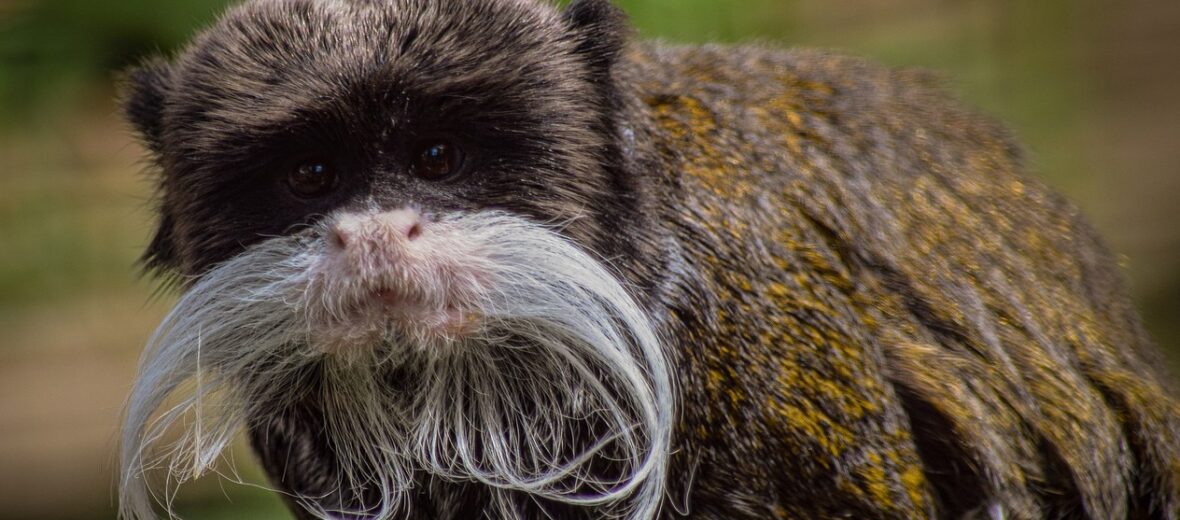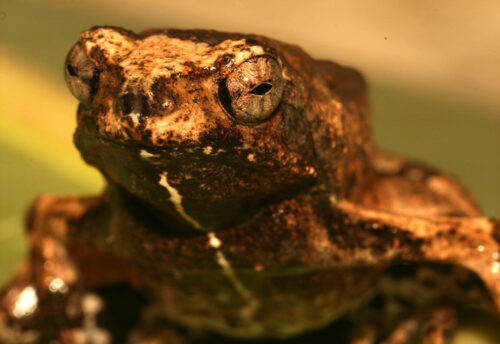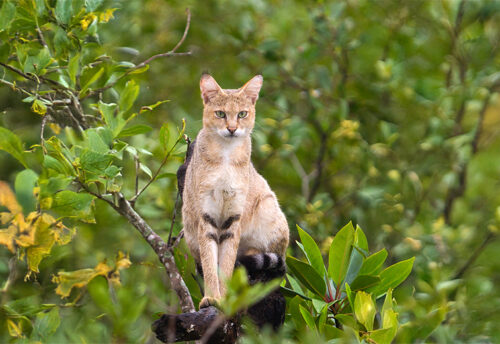
The emperor tamarin is a diminutive primate that belongs in the category of New World monkeys. There are 2 known subspecies of emperor tamarin found in Brazil, Peru, Bolivia, as well as in southwestern parts of the Amazon. Emperor tamarins like lowland tropical rainforests, but are also found in mountainous rainforests, seasonally flooded forests, and broadleaf & evergreen forest habitats. Habitat loss, due to human encroachment, agriculture, and ranching are currently threatening these tamarins. However, they are listed as Least Concern by the IUCN.
First the Stats…
Scientific name: Saguinus imperator
Weight: Up to 1 lb.
Length: Up to 10.4 inches
Lifespan: Up to 20 years
Now on to the Facts!
1.) Emperor tamarins live in troops of 2 to as many as 20 monkeys.
2.) These critters are diurnal (active during the day) and arboreal (spend most of their lives in trees).
3.) They are named after the late German emperor Wilhelm II, who donned an extravagant and droopy mustache.
4.) Being as they are not only arboreal, but part of the new world monkeys, they have prehensile tails; unlike old world monkeys.
5.) Their diet consists of nectar, fruit, tree sap, insects, small reptiles, and eggs.
But wait, there’s more on the emperor tamarin!
6.) Most females are trichromats (the possessing of 3 independent channels for conveying color) where males are dichromats (having 2 types of functioning color receptors). This assists them in locating properly ripened fruits. Another benefit from this type of vision is that it helps to easily detect well-camouflaged predators and prey.
7.) They communicate via trills, hissing sounds, and chirps.
Did you know…?
Emperors normally give birth to twins, but single births and even triplets have also occurred.
8.) Like other primates, social grooming plays an integral part of their daily ritual and strengthens bonds. Perhaps humans should consider a form of social grooming.
9.) The primary predators of tamarins are birds of prey, snakes, dogs, and wild cats.
10.) They are so lightweight that they can not only scale tree branches with the greatest of ease, but they can climb to the ends of branches to get outreaching fruit. They can also nimbly jump from branch to branch.
Now a Short Emperor Tamarin Video!
Also, check out the Critter Science YouTube channel. Videos added frequently!
Want to suggest a critter for me to write about? Let me know here.



